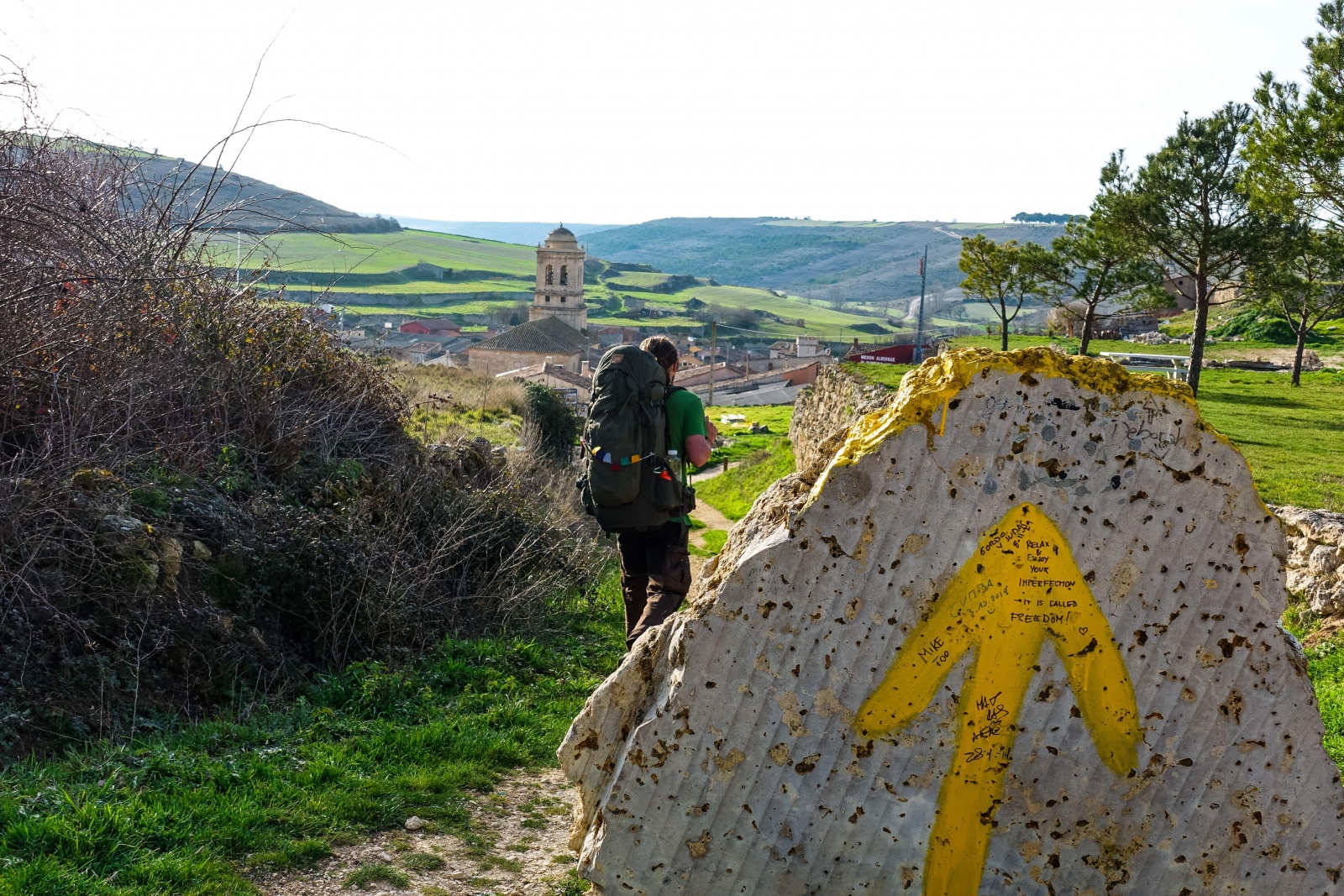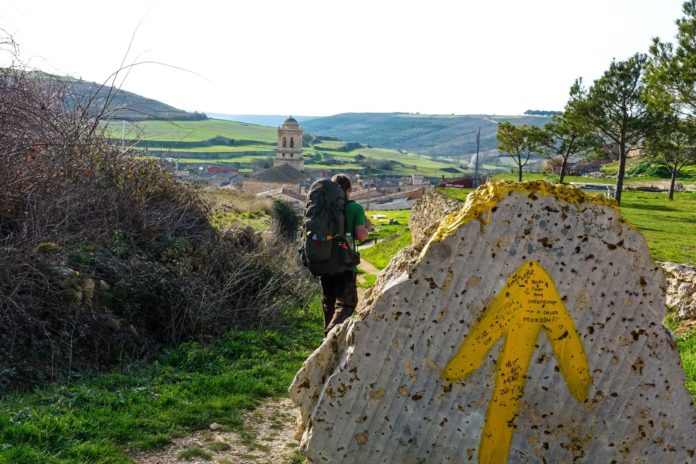
Then the pandemic struck, and reading The Crossway for a part of an hour each night became a mode of travel in a period of confinement. The author, Guy Stagg, is a Briton born in 1988. In 2013, he walked from Canterbury to Jerusalem (about 3,400 miles) along the old pilgrim roads. The book—I’ve been reading it ever since—is an account of that walk; of the interior drama that occasioned it; of the peripheries of Europe and the Mediterranean today; and of the effects of Christianity on those who are resistant to faith, or so they say.
In his early twenties, Stagg—educated, ambitious, working in “the largest open-plan office in London”—was overwhelmed by depression. He spent weeks pacing his bedroom, afraid to go out, dreaming vivid dreams of self-harm. Seized by the idea of pilgrimage, he walked, alone, from London to Canterbury, and felt the depression subside; and then he decided that the next year, beginning on New Year’s Day, he’d walk from Canterbury to Jerusalem. “I began to believe that, if I made it to Jerusalem, then I would be well. This was the wager driving me through the winter. I could not turn round, or even slow down, for I feared returning to that room and those wrecking daydreams. I could only push on, push on, push on—until I walked free from the past. Yet I carried those memories with me, like the rucksack on my shoulders, the burden on my back. And the farther I hiked from home, the heavier they weighed me down.”
Reader, he did it. He walked to the shrine of Benoît-Joseph Labre in the north of France; over the Alps in the winter; to Rome for Holy Week, where he “slept almost twenty hours—a plunging sleep so deep that I woke with no memory of where I was, but stepped from my bed feeling reborn”; to Albania, Macedonia, and Turkey, along the route St. Paul traveled; to Istanbul; to Greece and Cyprus, and then to Lebanon. Most nights, he slept in rectories and pilgrim houses, and so the story of the walk is interwoven with stories of the saints celebrated along the route and of the present-day religious who would open their doors to a weary stranger when he knocked on the door at dusk. “At the start of my journey, I thought I was walking into the wreckage of Christianity,” Stagg reflects at the Church of the Holy Sepulchre in Jerusalem:
My impression now was how much remained, holding tight to its decayed inheritance. Despite the decline of religion in Europe, it was still possible to cross the continent like a medieval pilgrim: travelling on foot, stopping at shrines, and supported by charity. Still possible to find comfort in pilgrim rites, even if the belief was gone. So maybe the decline was evidence of endurance, and loss the price we pay for surviving.
Sitting in the basilica that night, I wondered if this was true for my own life too.
The Crossway is so rich that it’s best read a few pages at a time, the pace of reading approximating the pace of the journey. Its insights, when they come, are road-tested, weather-proofed; they have the broken-in feel of real religious wisdom.







